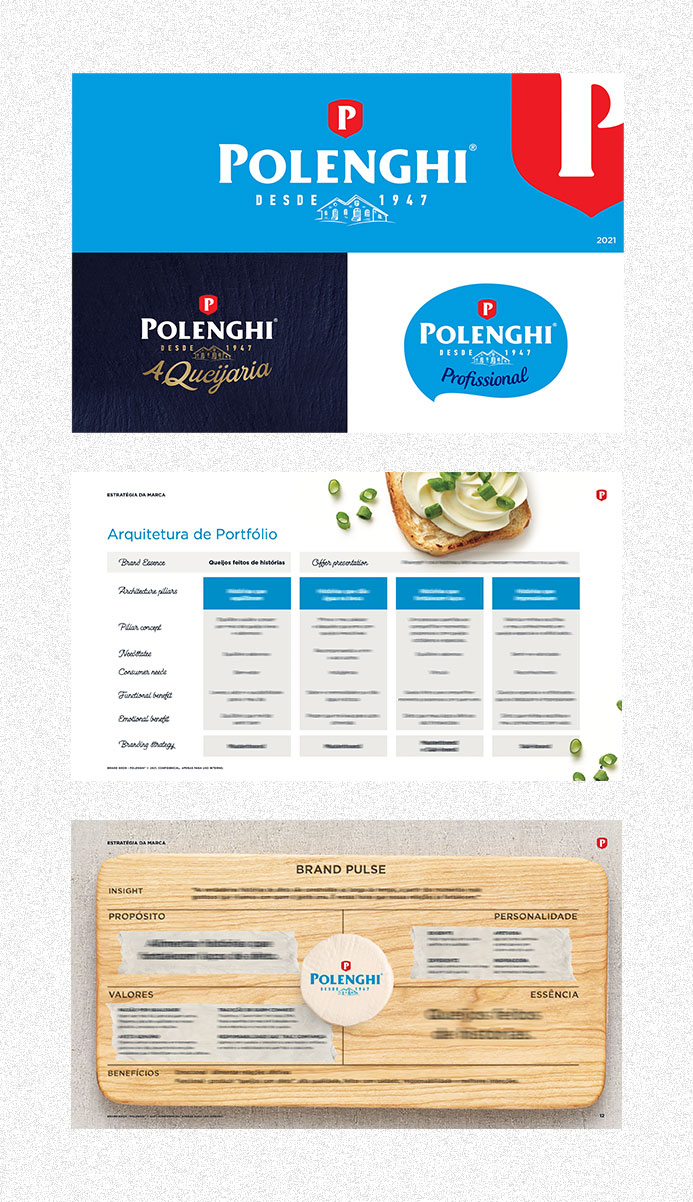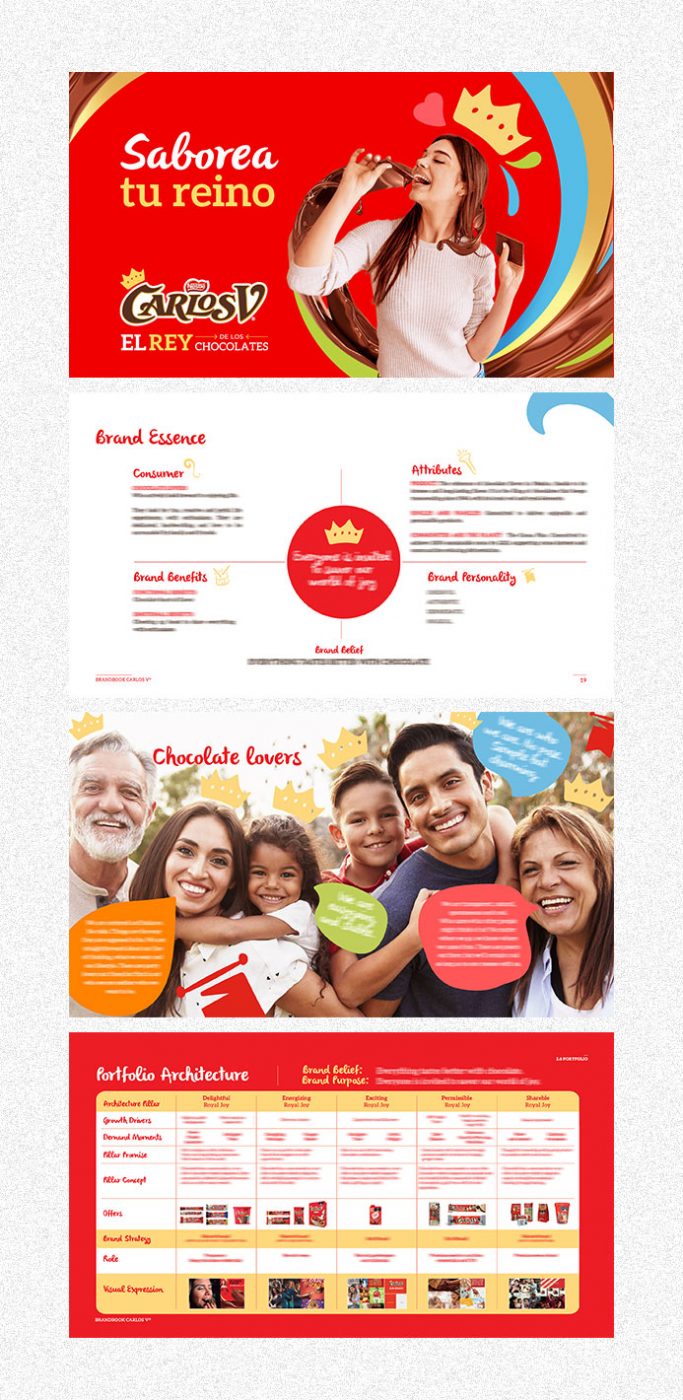
Fragmented markets, multiplied channels, diversified audiences: it’s increasingly complex for companies to offer their products and services. Under pressure to grow exponentially, they often launch a very high number of new lines every year. In the United States alone, 30,000 new products in the FMCG (Fast Moving Consumer Goods) category are launched on average each year by thousands of brands (Nielsen 2019). But the expansion needs to be well done to work. The uncontrolled proliferation of new brands can confuse the consumer, diluting positioning and generating unnecessary expenses.
In view of this reality, having a solid portfolio strategy, associated with a coherent brand architecture is essential to leverage its potential in the market, facilitating management, directing expansion and defining a clear vision of innovation. But what exactly are portfolio strategy and brand architecture – complementary yet different concepts, and what are their benefits?

Having a portfolio strategy is thinking of brands like a football team
For Alex Espinosa, head of strategy and partner at CBA B+G, “Portfolio strategy, together with brand architecture, is a journey through which the company defines, organizes and brings life to its vision in a way that is connected with its offer. Only then can it translate these elements to the consumer.” This makes them key branding elements, as they reinforce differentiation among competitors, in addition to guiding design choices and helping to outline a clear vision of innovation.
On the other hand, David A. Aaker, author of the book Brand Portfolio Strategy (2004), compares the brand portfolio to a football team that works together, where each member has defined roles to enable and support the business as a whole, aiming to prosperity and expansion. This view of brand management isn’t limited to large multinationals. Regardless of the size of the company, it contributes to:
Optimize investments, getting rid of unproductive brands and strengthening the identified key brands;
- Guide expansion into other categories or segments, maximizing market diversification;
- Clarify the positioning of brands, building brand equity and reinforcing the trust of investors and stakeholders;
Segment messages, products and services for each of the target audiences, making the customer aware of the proposals of each brand;
Ensure visual and verbal consistency of all lines and SKUs.
Polenghi: how the construction of the portfolio architecture strengthened the brand’s presence in special cheeses
Polenghi, the most beloved cheese brand in Brazil that has been on the market for almost 80 years, came to us to make a deep repositioning, seeking to capture its essence and attract new consumers. One of the major challenges of the project was to develop a solid portfolio architecture because the brand had never created one. After in-depth research, we got together with customers and consumers to structure it: we connected each pillar with its positioning and consumer needs (need states). More specifically, the new organization of products showed the need to strengthen the brand’s presence in the special cheese segment. This was the impulse needed to get rid of the Polenghi Sélection, a sub-brand that was not bringing the expected results and create Polenghi A Queijaria®, with the mission of democratizing fine cheeses through unique and uncomplicated products with a renewed identity. Read the complete portfolio repositioning and structuring case here.

Choosing the right architecture to structure the portfolio
Within the portfolio strategy, architecture is the system that establishes a clear value proposition for brands, helping their audience to identify them. In addition to defining the hierarchy and the relationship between them, it establishes how brands are perceived by consumers, their unique characteristics and how they satisfy their needs. Therefore, the architecture makes it possible to create a conceptual guide on how this portfolio should be developed and actually presented to consumers, including answers on how each brand should communicate, visually and verbally.
From PORTFOLIO STRATEGY…
Aims to create synergy, optimization, and clarity, providing answers about what the company should do regarding the competition, and its market share.
A global view of brand management, prior to brand architecture.
Focused on the company’s business vision.
In-depth analysis of the role and relevance of each brand for the business.
Helps the company make decisions about where to place investments, which brands to prioritize, which brands to eliminate, and where to innovate
… to BRAND ARCHITECTURE
- It aims to establish clear value propositions for each brand, and the hierarchy and relationship between each of them.
- It’s just one aspect of portfolio strategy.
- Focused on consumer engagement.
- Structuring of the offer according to what was established in the strategy.
- Helps the company to have a conceptual guide that establishes visual and verbal guidelines for each brand.
From PORTFOLIO STRATEGY…
Aims to create synergy, optimization, and clarity, providing answers about what the company should do regarding the competition, and its market share.
A global view of brand management, prior to brand architecture.
Focused on the company’s business vision.
In-depth analysis of the role and relevance of each brand for the business.
Helps the company make decisions about where to place investments, which brands to prioritize, which brands to eliminate, and where to innovate
… to BRAND ARCHITECTURE
- It aims to establish clear value propositions for each brand, and the hierarchy and relationship between each of them.
- It’s just one aspect of portfolio strategy.
- Focused on consumer engagement.
- Structuring of the offer according to what was established in the strategy.
- Helps the company to have a conceptual guide that establishes visual and verbal guidelines for each brand.
Together, they make it possible to build relevant, differentiated, and resilient brands.
There are four famous architectural models adopted by companies, which help them choose the most appropriate relationship between the master brand and the other brands in the portfolio.
- Branded House: In this structure, the master brand is in fact the only brand present in the entire portfolio. Its attributes are used in a variety of ways to describe different products and services that benefit from its association. A perfect example of this is Fedex: you will not find any service that is not directly linked to the main brand.
- Sub-brands: In this case, the master brand is the main reference, but the sub-brands add a new attribute that it could hardly carry alone. This is the case of the Iphone: the brand has specific attributes (ex: the name) but it also uses attributes from Apple (logo, look and feel) in a combined way that increases its power in consumers and strengthens the company’s presence in the segment of cell phones.
- Endorsed: This model applies when brands are launched with independent positioning, but with ‘the endorsement’ of the master brand, whose name and logo appear in some way on the product in a distanced way, just to remind the consumer of its presence, generating trust. Nestlé uses this model a lot with brands like KitKat or Crunch, where the positioning is totally unique, but always associated with the company.
- House of Brands: This model is the opposite of the Branded House, as it does not have a predominant master brand in the portfolio. On the contrary, each brand has its own positioning (what we call stand-alone). The master brand may be invisible or irrelevant to the consumer. This model is used a lot by giant companies that are synonymous with the category like Unilever, whose main brands (eg Dove) do not seem to have any ties to the company behind them, and have their own derivative brands.
I’m green™: how the transformation of a product brand into a masterbrand expanded its scope in renewable sources
For Braskem, we designed the expansion of the product portfolio in favor of the Circular Economy based on the I’m green™ brand. The brand designated only one type of plastic resin produced from renewable raw material, the so-called ‘bio-based’, while other products from a renewable and recyclable source were scattered throughout the portfolio. When we looked at the portfolio strategy as a whole, we saw an opportunity to expand and bring together all renewable sources under one strong brand, the already recognized I’m green™. Thus, through the reorganization and transformation of a product brand into a masterbrand, we expanded Braskem’s sustainable activities, building Brand Equity. Read more about the case here.


Where to start to create a solid portfolio strategy?
There are three fundamental elements to take into account when creating the pillars that will structure a brand’s portfolio:
Positioning: When creating the pillars, the portfolio must be connected with the positioning of the master brand, present or invisible, and all its sub-brands or endorsed brands, reflecting their values, attributes and personality, avoiding developing offers that are not aligned with your vision and that dilute your brand equity. Therefore, our portfolio organization always starts with a deep redefinition of the brand essence, as this will provide a clear direction.
Consumer needs (needstates): It is common for companies to segment by functional criteria strictly linked to their internal vision, such as price, channel or sales units. However, the most successful segmentation must be driven by consumer needs. Therefore, at CBA B+G we prioritize segmenting by needstates, which can be defined as the intersection between what consumers want and how they want it.
Business objectives: The portfolio strategy bridges the gap between brand management and the company’s business vision. Therefore, in addition to the positioning, it is necessary to keep in mind how each pillar and each brand meets these objectives and, if they do not meet them, the right decisions must be taken to ensure good results, growth and profit.
Carlos V: how the creation of emotional pillars, based on consumer needs, strengthened the brand and guided the expansion of the premium line
Carlos V, Mexico’s most popular and traditional chocolate, was suffering from intense competition from other snack brands, perceived as having higher quality and greater engagement with children. The challenge was to modernize it and build a unique territory while maintaining its historical legacy.
When reviewing the entire brand strategy, we saw the opportunity to expand audiences to also target chocolate-loving adults, re-signifying the brand’s fun and magical personality. Based on its new essence, we reorganized the portfolio so that each pillar was aligned with the needstates and brought emotional attributes. This helped define differentiated product features, which led to the establishment of powerful brand properties and a complete renewal of the visual identity of all lines. See more about the case here.

Designing a coherent portfolio strategy with a solid architecture is not easy, which is why we help our clients to draw a complete vision of the brand, uncovering opportunities for line extensions and renewals. Polenghi, Braskem and Carlos V are just some of the portfolio strategy jobs that we have developed. We have many other partners such as Häagen-Dazs, Ninho or Purina. Come and transform your brand with us, creating clarity in your brand portfolio, based on deep positioning work. Click here for more information.
CBA B+G

